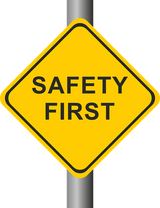The Dangers of Driver Fatigue

There are approximately 3.5 million professional truck drivers working in the United States, according to the American Trucking Association. Commercial truck driving is a massive, ever-growing industry that plays an important role in our country's economy. Truck drivers are responsible for carrying materials and products to and from businesses, paying the foundation for a healthy economy.
But commercial truck driving isn't a low-risk occupation. In fact, statistics show that more truck drivers have died on the job than any other occupation. According to the Bureau of Labor Statistics of the United States Department of Labor, 835 commercial truck drivers have died on the job. In comparison, only 130 construction workers and miners have died.
Why is trucking such a dangerous job? The answer: because many drivers suffer from fatigue. And driving while fatigued creates a dangerous scenario for both the driver and other motorists on the road. Several studies have shown that fatigued truck drivers have roughly the same response time as drivers who are under the influence of alcohol, attesting to the dangers of driving while fatigued. When a truck driver is fatigued, his or hers reaction times are slower, meaning they may not be able to take the necessary evasive action to avoid collision.
So, what steps can commercial tuck drivers take to prevent fatigue? See below for some helpful tips:
- Get plenty of sleep, striving for at least seven to eight hours of shut-eye per night.
- When possible, avoid driving during your normal sleeping hours. If you normally go to sleep at 1 AM, for instance, avoid driving past 1 AM.
- Strategically plan your trucking route to include rest areas and hotels.
- If you have a co-driver, take shifts driving in which you drive for X amount of hours and he or she drives for the next X hours.
- Turn on the radio or CD player when driving alone.
- Be honest to your employer about the number of hours which you've driven.
- Exercise regularly, both before and after your driving shifts.
- Cut back on coffee and other caffeinated beverages. Although an effective pick-me-up, caffeine can actually increase your fatigue after the effects wear off.
- Follow a well-balanced, nutritious diet plan. Sure, it's probably easier to pick up fast food on the road, but doing so can increase fatigue levels while offering little-to-no real nurition.
Recent Posts
-
Fire Safety in the Workplace: What You Need to Know
What steps are you taking to prevent fires in your workplace? According to the U.S. Occupational Saf …Aug 23rd 2023 -
Is It Safe to Go Jogging With a Cold Infection?
If you're suffering from a cold infection, you might be wondering whether it's safe to go jogging. T …Aug 22nd 2023 -
5 Safety Tips to Follow When Using a Powder-Actuated Tool
Powder-actuated tools are commonly used to join materials to steel and concrete. Also known as Hilti …Aug 20th 2023




